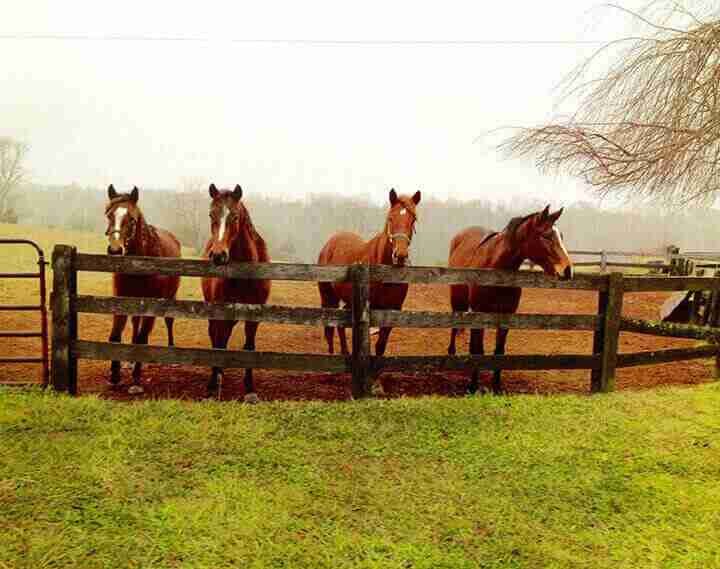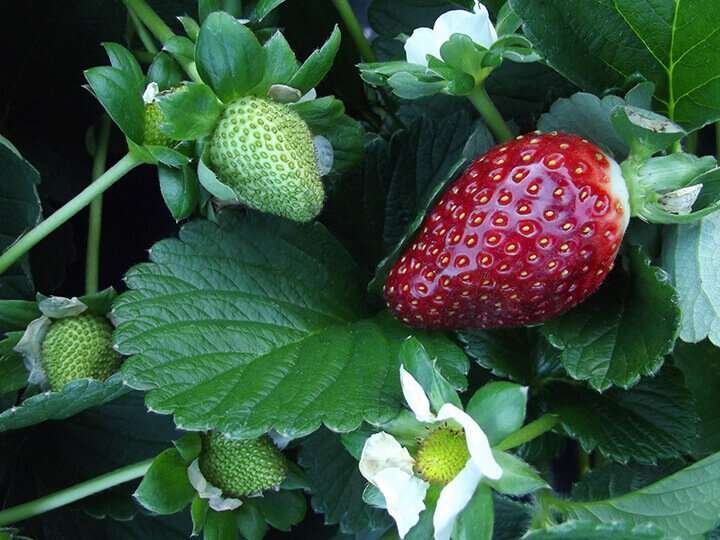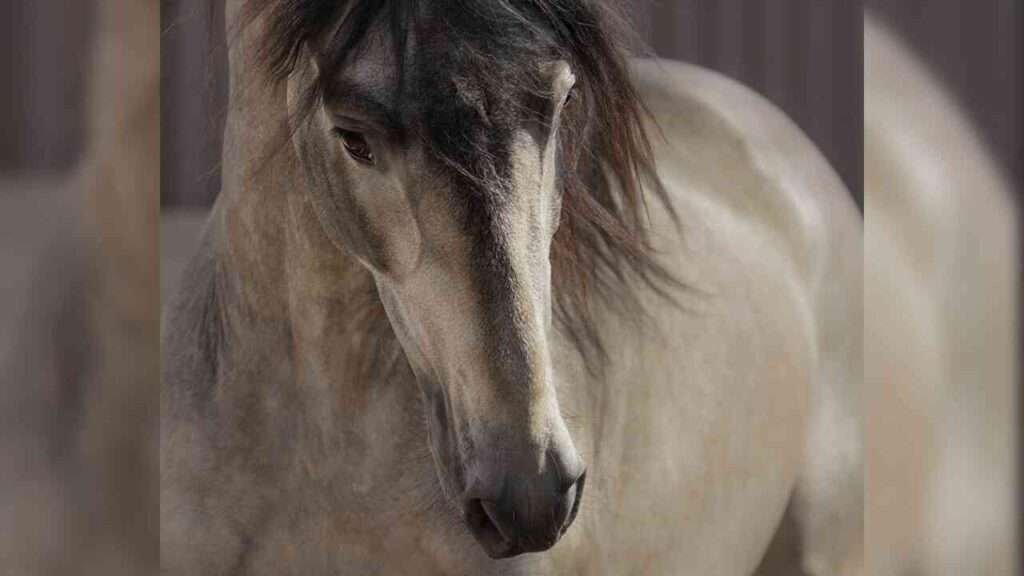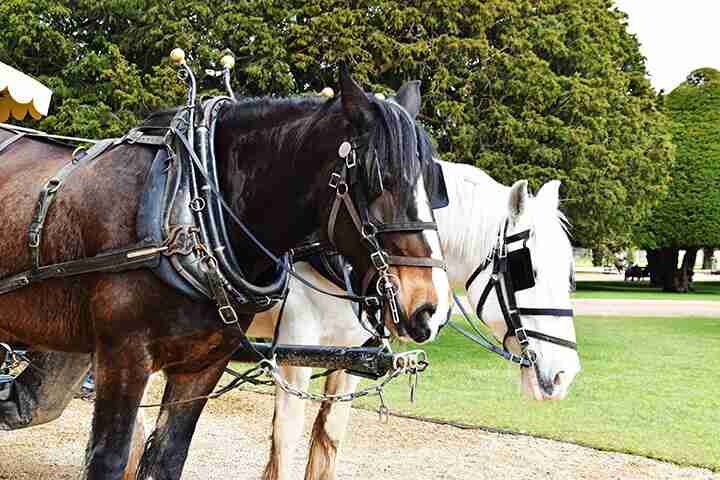Thoroughbred horses, synonymous with elegance and speed, they hold a significant place in the world of equines. To truly appreciate Thoroughbred horses, one must understand their origins and the selective breeding that has shaped their distinctive traits. These horses, known for their athleticism and spirited nature, are a result of centuries of careful development. Let’s talk about the rich history, distinctive characteristics, and ongoing legacy of these remarkable creatures.

Historical Significance of Thoroughbred Horses
Thoroughbreds have left an indelible mark on history, from their roots in 17th-century England to becoming the foundation of modern horse racing. Their legacy extends to various cultures, symbolizing speed, endurance, and the pursuit of excellence.
Thoroughbred Horse Characteristics
With their refined appearance, slim bodies, and expressive eyes, Thoroughbreds are a breed apart. Their unique physical and behavioral characteristics set them apart in the world of horses. While the term “Thoroughbred” generally refers to a specific breed, there are notable variations within.
While Thoroughbreds are a distinct breed, their characteristics, such as speed, athleticism, and versatility, have influenced and been incorporated into various other breeds through crossbreeding. Here are some horse breeds that may exhibit Thoroughbred characteristics:
- Appendix Quarter Horse: A cross between Thoroughbreds and Quarter Horses, known for speed and agility.
- Trakehner: A warmblood breed that often incorporates Thoroughbred bloodlines for athleticism.
- Warmbloods (Various Breeds): Many warmblood breeds, including the Hanoverian and Oldenburg, may have Thoroughbred influences for sport horse qualities.
- Irish Sport Horse: A cross between Thoroughbreds and Irish Draught Horses, combining speed with strength.
- American Quarter Horse (Racing Lines): Some Quarter Horses, especially those with racing pedigrees, may have Thoroughbred influences for speed.
- Selle Français: A French sport horse breed that may incorporate Thoroughbred bloodlines for performance.
- Australian Stock Horse: Crosses with Thoroughbreds have been made to enhance speed and agility in this versatile stock horse.
- National Show Horse: A cross between Arabians and American Saddlebreds, with Thoroughbred influence for refinement.
- Australian Warmblood: Warmblood breeds in Australia may include Thoroughbred lines for athleticism.
- Morgan (Sport Type): Some Morgans, particularly those bred for sport, may have Thoroughbred characteristics.
Training Regimen for Thoroughbreds
Training a Thoroughbred requires a delicate balance of discipline and understanding. These horses showcase their speed and competitive spirit, captivating audiences worldwide.
Breeding Thoroughbreds
Breeding Thoroughbreds is both an art and a science. It’s a meticulous and well-regulated process aimed at producing horses that embody the speed, stamina, and athleticism characteristic of the breed. Here is an overview of the key aspects involved in breeding Thoroughbreds:
Selecting Parent Stock:
- Stallion Selection: Thoroughbred stallions, often with successful racing or breeding records, are chosen based on their pedigree, conformation, racing performance, and genetic potential.
- Mare Selection: Broodmares are selected for their pedigree, conformation, racing history, and reproductive health. Successful mares with strong bloodlines are preferred.
Things to take care of while Breeding Thoroughbreds:
Pedigree Analysis: Studying the pedigrees of potential mating pairs is crucial. Breeders analyze the bloodlines to identify desirable traits and genetic compatibility.
Breeding Methods: Thoroughbreds are primarily bred through natural cover, where the mare is physically mated with the stallion. Artificial insemination is not permitted for Thoroughbreds in many racing jurisdictions.
Breeding Season: Thoroughbreds typically follow a regulated breeding season, usually beginning in February in the Northern Hemisphere. This helps synchronize foal births and is essential for racehorse age classifications.
Pregnancy and Foaling: After successful mating, the gestation period for Thoroughbreds is around 11 months. Mares are closely monitored during pregnancy, and foaling usually occurs between January and April.
Early Training and Development: Thoroughbred foals are often introduced to basic handling and training at a young age. Early socialization and exposure to various stimuli contribute to their overall development.
Registration: Foals must be registered with the relevant Thoroughbred studbook to be officially recognized as Thoroughbreds. This involves providing documentation of parentage and meeting registration requirements.
Racing Careers: Many Thoroughbreds are bred with the primary purpose of entering the racing industry. Once of racing age, they undergo training to prepare for competitive careers on the racetrack.
Breeding Programs and Organizations: Thoroughbred breeding is governed by various organizations and studbooks, such as The Jockey Club in the United States. Breeders adhere to strict regulations and guidelines to maintain the integrity of the breed.
Successful Thoroughbred breeding requires a combination of expertise, knowledge of bloodlines, and a commitment to the welfare of the horses. The goal is to produce horses that not only excel on the racetrack but also contribute to the ongoing improvement of the Thoroughbred breed.
Health Concerns in Thoroughbreds
Despite their robust nature, Thoroughbreds are susceptible to certain health issues. Thoroughbreds, known for their speed and agility, are robust horses, but like any breed, they are susceptible to certain health concerns. Here are some common health issues that Thoroughbreds may face:
Orthopedic Issues:
- Fractures: Thoroughbreds, especially those involved in racing, are prone to stress fractures and other types of bone injuries due to the intense physical demands.
Lameness:
- Tendon and Ligament Injuries: Lameness issues can arise from injuries to tendons and ligaments, often associated with overexertion or improper training.
Gastrointestinal Disorders:
- Colic: Thoroughbreds may be predisposed to colic, a term for various gastrointestinal issues, which can be caused by factors such as diet changes, dehydration, or intestinal blockages.
Respiratory Problems:
- Exercise-Induced Pulmonary Hemorrhage (EIPH): Commonly known as bleeding, EIPH can occur during intense exercise, leading to respiratory issues.
Hoof Problems:
- Navicular Disease: Thoroughbreds can be susceptible to navicular disease, a condition affecting the navicular bone in the hoof, causing lameness.
Dental Issues:
- Dental Problems: Like all horses, Thoroughbreds need regular dental care to address issues such as uneven wear, dental points, and other dental abnormalities.
Metabolic Conditions:
- Equine Metabolic Syndrome (EMS): Some Thoroughbreds may be prone to metabolic conditions, including EMS, which can lead to obesity, laminitis, and insulin resistance.
Joint Problems:
- Arthritis: Due to the physical demands on joints, Thoroughbreds may develop arthritis, especially in older age or following a strenuous career.
Skin Conditions:
- Sarcoids: Thoroughbreds can be susceptible to skin tumors called sarcoids, which may require surgical removal.
Reproductive Issues:
- Fertility Problems: Some Thoroughbred stallions and mares may experience fertility issues, affecting their reproductive capabilities.
Behavioral Concerns:
- Stall Rest Challenges: Thoroughbreds, accustomed to active lifestyles, may struggle with behavioral issues during stall rest, especially if recovering from an injury.
Eye Conditions:
- Equine Recurrent Uveitis (ERU): This inflammatory eye condition may affect Thoroughbreds, leading to discomfort and potential vision impairment.
Nutrition and Care for Thoroughbred Horses
Proper nutrition is paramount for Thoroughbreds, supporting their energy needs and overall health. Proper nutrition and care are crucial for the well-being and performance of Thoroughbred horses. Here are key considerations for their nutrition and care:
Nutrition
- Balanced Nutrition: Provide a well-balanced diet that meets the nutritional needs of Thoroughbreds, considering factors such as age, weight, activity level, and overall health. High-quality forage, such as good hay or pasture, should be the foundation of their diet.
- Energy Requirements: Thoroughbreds, especially those in training or racing, have high energy requirements. Choose feeds that provide sufficient calories to support their energy needs. Monitor body condition and adjust the diet accordingly to prevent excessive weight loss or gain.
- Protein Intake: Ensure an adequate protein intake to support muscle development, repair, and overall growth. Choose feeds with quality protein sources, and adjust protein levels based on the horse’s age and activity.
- Mineral and Vitamin Supplements: Supplement the diet with minerals and vitamins as needed. Common supplements include calcium, phosphorus, selenium, and vitamins A, D, and E. Consult with a veterinarian or equine nutritionist to determine specific supplement requirements.
- Hydration: Provide access to clean, fresh water at all times. Thoroughbreds may have increased water needs, especially during hot weather or intense training.
Care
- Regular Veterinary Check-ups: Schedule routine veterinary check-ups to monitor the horse’s overall health, and dental condition, and address any emerging issues promptly. Dental care is crucial; ensure regular dental check-ups and floating to prevent dental problems.
- Exercise and Turnout: Incorporate regular exercise and turnout into the daily routine to promote physical and mental well-being. Allow for free movement to prevent stiffness and support joint health.
- Stable Management: Maintain clean and well-ventilated stables to prevent respiratory issues. Practice good stable management, including regular mucking out, to create a healthy living environment.
- Parasite Control: Implement a strategic parasite control program to manage internal parasites. Rotate pastures and practice manure management to minimize parasite exposure.
- Monitoring Body Condition: Regularly assess and monitor the horse’s body condition score to adjust feeding practices accordingly. Prevent obesity, which can lead to health issues, or excessive leanness, which may affect performance.
- Individualized Care: Recognize that each Thoroughbred is an individual with unique needs. Tailor nutrition and care plans based on specific requirements, health conditions, and performance levels.
- Special Considerations for Racing Horses: Racing Thoroughbreds may require specialized diets during training and competition. Work closely with a knowledgeable equine nutritionist to design a nutrition plan that supports racing performance
Challenges of Owning a Thoroughbred
Owning a Thoroughbred comes with unique challenges, from grooming demands to managing their high energy levels. Owning a Thoroughbred can be a rewarding experience, but it comes with its own set of challenges. Here are some common challenges that Thoroughbred owners may face:
Thoroughbred Care
- High Energy Levels: Thoroughbreds are known for their athleticism and high energy levels. Owners may find it challenging to manage and channel this energy, especially if the horse is not actively engaged in regular exercise.
- Exercise Requirements: Meeting the exercise needs of Thoroughbreds can be demanding. These horses are bred for speed and stamina, and insufficient exercise can lead to behavioral issues or health concerns.
- Specialized Nutrition: Racing or performance Thoroughbreds may require specialized diets to meet their energy demands. Owners need to invest time and resources in understanding and providing appropriate nutrition.
- Health Concerns: Thoroughbreds, like any breed, may be prone to specific health issues such as orthopedic problems, lameness, and respiratory conditions. Owners need to stay vigilant and address health concerns promptly.
Effort
- Cost of Care: The cost of owning a Thoroughbred can be relatively high. Expenses include feed, veterinary care, farrier services, and, for racing horses, additional costs associated with training and competition.
- Training Expertise: Thoroughbreds, especially those involved in racing or competitive disciplines, may require professional training. Finding a knowledgeable trainer and maintaining a consistent training program can be challenging.
- Behavioral Challenges: Thoroughbreds may exhibit spirited behavior, and some individuals may be more prone to certain vices or behavioral issues. Patience, consistency, and proper training are essential for managing behavior.
- Retraining After Racing Career: Thoroughbreds transitioning from a racing career to a new discipline may require careful retraining. Adaptation to new routines and expectations can be a gradual process.
- Space and Turnout Needs: Providing adequate space and turnout for Thoroughbreds is essential for their physical and mental well-being. Owners with limited facilities may face challenges meeting these needs.
Challenges
- Resale Challenges: Reselling Thoroughbreds, especially those retired from racing, can be challenging. Finding suitable homes and ensuring a smooth transition to post-racing life requires careful consideration.
- Time Commitment: Owning a Thoroughbred demands a significant time commitment. From daily care routines to regular exercise and training sessions, owners need to dedicate time to meet their horse’s needs.
- Equestrian Community: Being part of the equestrian community and staying updated on industry trends and regulations is important. Owners may find it challenging to navigate the complex world of horse ownership without a supportive network.
Success Stories of Thoroughbred Champions
The world of Thoroughbred racing has produced legendary champions.
Thoroughbred Horses in Pop Culture
Beyond the racetrack, Thoroughbreds have made their mark in pop culture. From literature to film, explore how these majestic horses have become cultural icons, admired for their beauty and grace.
Why Thoroughbred Horses Capture Hearts
The allure of Thoroughbreds extends beyond their physical prowess. Understand the emotional connection and admiration these horses evoke, making them beloved companions and competitors.
The Future of Thoroughbred Horse Industry
As the equine industry evolves, so does the future of Thoroughbred horses. Explore the trends and innovations shaping their world, ensuring a promising future for these remarkable creatures.
Conclusion
In concluding our exploration of Thoroughbred horses, we celebrate their enduring legacy, recognizing them not just as athletes but as symbols of beauty, speed, and the timeless pursuit of excellence.
FAQs
- Are Thoroughbred horses suitable for novice riders? Thoroughbreds, known for their spirited nature, are better suited for experienced riders who can handle their energy and athleticism.
- How long do Thoroughbred horses typically live? With proper care, Thoroughbred horses can live into their late teens or early twenties.
- Can Thoroughbreds participate in disciplines other than racing? Absolutely! Thoroughbreds are versatile and can excel in various equestrian disciplines with proper training.
- What makes Thoroughbred racing so popular? Thoroughbred racing’s popularity stems from the horses’ incredible speed, competitiveness, and the thrill of watching them push their limits on the track.
- Are there rescue organizations specifically for Thoroughbred horses? Yes, there are rescue organizations dedicated to rehoming retired or rescued Thoroughbreds, helping them find second careers or loving homes.
- How can I get involved in Thoroughbred horse racing as a spectator? Many racetracks offer public events, and major races are often televised. Check your local tracks and racing schedules for opportunities to witness Thoroughbred racing firsthand.





